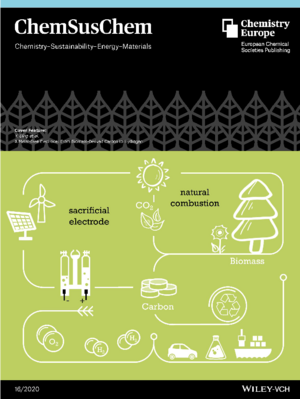Hydrogen is the emission-free fuel of the future if produced from non-fossil sources. Biomass gasification or electrolysis of water are possible clean ways to produce this so-called green hydrogen. For a global application, the material for the electrolyser's electrodes must be sustainable, scalable, and more cost-effective compared to the current precious metal-based electrodes. A key requirement to sustainable and green energy systems is also that all harmful or rare resources utilized in the extraction and conversion process must be part of a closed material cycle.
In the current work of the Heumann group Carbon Synthesis and Application a carbon-based electrode for hydrogen production is presented that can be part of a closed material cycle if produced from biomass. Continuous hydrogen production takes place at the cathode through catalytic water splitting during the oxygen evolution reaction (OER), while intentionally allowing the decomposition of the electrode into CO2 analogous to the process of natural biomass decomposition. This strategy of a sacrificial electrode could provide a scalable and low-cost material solution for hydrogen production from renewable energy sources. Yuxiao Ding et al. demonstrated the theoretical and technical feasibility of using carbon to produce hydrogen. Furthermore, the authors show that chemical modifications can further improve the performance characteristics towards the catalytic process. Combined with renewable energy derived electricity, this idea offers a real option for future energy systems.
The importance of this finding was recognized by the editorial board of the ChemSusChem journal and therefore highlighted as Cover Feature of the current issue (16/2020).
Original publication: Ding, Y., Greiner, M., Schlögl, R., Heumann, S. (2020). A Metal-Free Electrode: From Biomass-Derived Carbon to Hydrogen ChemSusChem https://doi.org/10.1002/cssc.202000714

